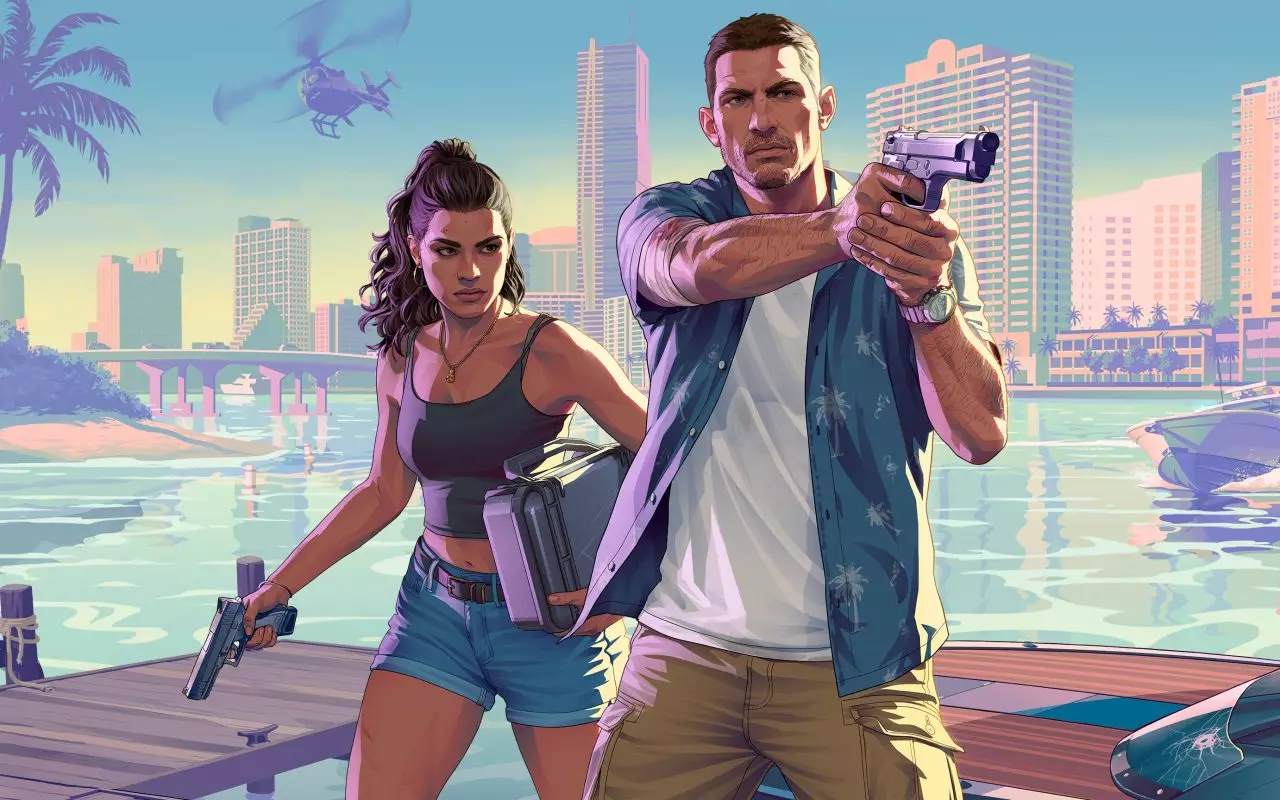The gaming world has experienced a seismic shift this week, thanks to Rockstar Games unveiling the second official trailer for Grand Theft Auto VI. The hype surrounding the release has sparked an explosion of dialogues, with fans and industry insiders reflecting on the future of gaming, particularly concerning game pricing. The palpable excitement is intermingled with apprehensions about how much gamers should be ready to invest in the latest titles, especially in light of the escalating costs associated with game development.
Former Rockstar animator, Mike York, who contributed to the grand successes of Grand Theft Auto V and Red Dead Redemption 2, has entered the fray with compelling arguments supporting the elevated price point of GTA VI. His assertion that the depth of detail and realism in the latest installment justifies a premium price is an intriguing perspective. He boldly dismisses comparisons to other franchises, particularly Nintendo’s forthcoming Mario Kart World, implying that the sheer complexity and craftsmanship behind GTA VI render it superior in value. This position raises the critical question: should gamers be paying significantly more for a game when its development quality is highlighted?
Nintendo’s Bold Pricing Strategy
On the other side of the aisle, Nintendo is preparing to launch Mario Kart World at a price tag of $80, alongside the Switch 2 on June 5, 2025. The company has staunchly defended this decision, with Bill Trinen assuring fans that the expansive nature of the game warrants the cost. He emphasizes that the experience is not only about racing but also about discovery and engagement within a rich gaming ecosystem. With Mario Kart’s previous success on the Nintendo Switch — exceeding 67 million copies sold — it’s clear that Nintendo is banking on the franchise’s enduring popularity to validate its pricing approach.
This juxtaposition of Mario Kart World and GTA VI leads to a fascinating discourse. While York claims no competition exists due to the detail present in GTA VI, Trinen stands firm in the belief that Mario Kart World is about creating a vast universe that won’t merely offer traditional racing but a layered, immersive experience for players. It evokes the idea that one game’s pricing could hinge heavily on its perceived value across different gaming philosophies.
The Quality vs. Price Paradigm
What lies at the heart of this argument is the industry’s evolving landscape, where the definition of value is complex and subjective. Recent trends show a growing tolerance among gamers for higher price points, often justified by advancements in graphics, gameplay mechanics, and overall immersion. The overwhelming financial success of franchises like Call of Duty and the aforementioned Grand Theft Auto suggests that consumers might be willing to pay more — especially for innovative experiences – rather than settle for traditional pricing models.
However, it’s essential to question whether detail and realism are the sole metrics by which value should be measured. Shouldn’t enjoyable gameplay, engaging narratives, and the emotional resonance of a game equally contribute to its cost? While York critiques Mario Kart’s competition against GTA VI for its lack of complexity, one must ponder whether fun and enjoyment could be sufficient returns for a lower price point.
The Future of Game Pricing
As the gaming industry continues to push boundaries — integrating virtual realities, expansive open-world environments, and intricate narratives — what does this mean for future pricing strategies? The imminent releases of both GTA VI and Mario Kart World serve as test cases for consumer acceptance regarding these evolving price points. While high production values and realism are valid considerations, there remains a risk of alienating gamers who crave engaging gameplay without the hefty dollar signs attached.
As consumers, the dialogue we engage in regarding game pricing reflects not only our expectations but also our willingness to adapt. Will we collectively endorse the notion that the quality of a game can justify exorbitant price tags, or will we champion a gaming culture that prioritizes accessibility and enjoyment above all else? The answer is still looming, hanging in the balance of consumer behavior and market progression as gaming enters a new era.

